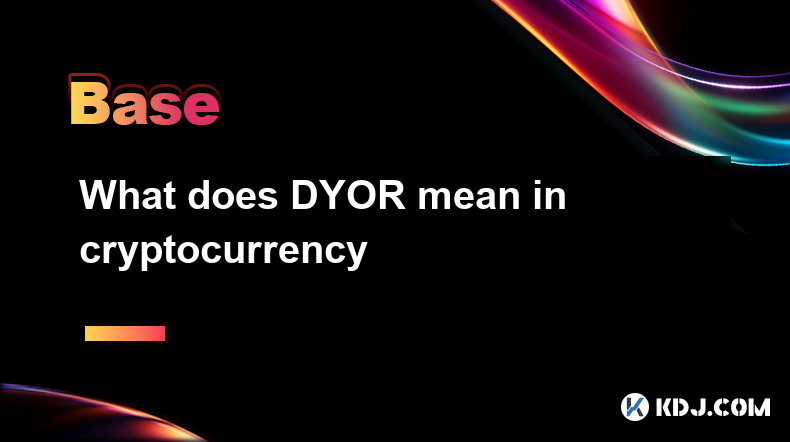-
 Bitcoin
Bitcoin $84,693.2712
0.39% -
 Ethereum
Ethereum $1,579.8022
-1.27% -
 Tether USDt
Tether USDt $0.9999
0.01% -
 XRP
XRP $2.0649
-1.48% -
 BNB
BNB $588.5203
1.08% -
 Solana
Solana $134.1635
0.73% -
 USDC
USDC $0.9999
0.00% -
 TRON
TRON $0.2453
0.14% -
 Dogecoin
Dogecoin $0.1549
-1.29% -
 Cardano
Cardano $0.6150
-0.58% -
 UNUS SED LEO
UNUS SED LEO $9.2293
-2.29% -
 Chainlink
Chainlink $12.6383
0.51% -
 Avalanche
Avalanche $19.0586
-1.12% -
 Toncoin
Toncoin $2.9839
0.77% -
 Stellar
Stellar $0.2416
1.21% -
 Shiba Inu
Shiba Inu $0.0...01186
-1.00% -
 Hedera
Hedera $0.1655
3.96% -
 Sui
Sui $2.1102
0.61% -
 Bitcoin Cash
Bitcoin Cash $328.0841
-2.16% -
 Polkadot
Polkadot $3.6849
2.00% -
 Litecoin
Litecoin $75.3187
0.18% -
 Hyperliquid
Hyperliquid $16.9820
5.30% -
 Dai
Dai $1.0000
-0.02% -
 Bitget Token
Bitget Token $4.3606
0.03% -
 Ethena USDe
Ethena USDe $0.9992
0.00% -
 Pi
Pi $0.6118
-0.11% -
 Monero
Monero $216.1674
-1.30% -
 Uniswap
Uniswap $5.1872
-1.13% -
 OKB
OKB $49.8382
-2.62% -
 Pepe
Pepe $0.0...07092
-2.29%
How do stablecoins maintain price stability?
Stablecoins maintain stability through fiat-collateralized, crypto-collateralized, algorithmic, and hybrid methods, each using unique mechanisms to ensure a stable value in the volatile crypto market.
Apr 14, 2025 at 01:07 am

Stablecoins are a type of cryptocurrency designed to maintain a stable value relative to a specific asset or basket of assets. This stability is crucial for their use as a medium of exchange, a store of value, or a unit of account within the volatile cryptocurrency market. In this article, we will explore the various mechanisms stablecoins use to maintain their price stability, focusing on the different types of stablecoins and their unique approaches.
Types of Stablecoins
Stablecoins can be broadly categorized into four types: fiat-collateralized, crypto-collateralized, algorithmic, and hybrid. Each type uses a different method to maintain stability, and understanding these methods is essential to grasp how stablecoins work.
Fiat-collateralized stablecoins are pegged to a fiat currency like the US dollar. They maintain their value by holding an equivalent amount of the fiat currency in reserve. Examples include Tether (USDT) and USD Coin (USDC).
Crypto-collateralized stablecoins use other cryptocurrencies as collateral to maintain their peg. These stablecoins often require over-collateralization to account for the volatility of the crypto assets used as collateral. DAI, issued by MakerDAO, is a prominent example of this type.
Algorithmic stablecoins rely on algorithms to control the supply of the stablecoin in response to changes in demand. They do not use any collateral but instead adjust the coin's supply to maintain its peg. Examples include Ampleforth (AMPL) and TerraUSD (UST).
Hybrid stablecoins combine elements of both collateralized and algorithmic mechanisms. They might use collateral to back the stablecoin while also employing algorithms to adjust supply. Frax (FRAX) is an example of a hybrid stablecoin.
Fiat-Collateralized Stablecoins
Fiat-collateralized stablecoins maintain their price stability by holding a reserve of the underlying fiat currency. For instance, if a stablecoin is pegged to the US dollar, the issuing entity must hold an equivalent amount of US dollars in reserve for each stablecoin in circulation.
Transparency and audits are crucial for these stablecoins. Regular audits are conducted to ensure that the reserves match the circulating supply. For example, Tether Limited publishes quarterly reports detailing its reserves.
Redemption mechanisms allow users to exchange their stablecoins for the underlying fiat currency at a 1:1 ratio. This redemption right helps maintain trust in the stablecoin's peg.
Regulatory compliance is another factor that contributes to the stability of fiat-collateralized stablecoins. Issuers must adhere to financial regulations, which adds a layer of credibility and stability.
Crypto-Collateralized Stablecoins
Crypto-collateralized stablecoins use other cryptocurrencies as collateral to maintain their peg. This method is often used when issuers want to avoid the regulatory complexities of dealing with fiat currencies.
Over-collateralization is a key feature of crypto-collateralized stablecoins. For example, DAI requires users to deposit more Ethereum than the value of DAI they wish to mint. This over-collateralization helps absorb price fluctuations in the collateral.
Liquidation mechanisms are used to maintain stability. If the value of the collateral falls below a certain threshold, the collateral is liquidated to cover the stablecoin's value. This process ensures that the stablecoin remains pegged to its target value.
Decentralized governance plays a role in some crypto-collateralized stablecoins. For instance, MakerDAO's governance token, MKR, allows holders to vote on changes to the system's parameters, which can affect the stability of DAI.
Algorithmic Stablecoins
Algorithmic stablecoins do not rely on any collateral but instead use algorithms to adjust the supply of the stablecoin in response to market demand. This approach aims to maintain the stablecoin's peg without the need for reserves.
Rebasing is a common mechanism used by algorithmic stablecoins. For example, Ampleforth (AMPL) adjusts the number of tokens in each wallet daily based on the deviation from its target price. This rebasing helps to stabilize the coin's value.
Seigniorage is another method used by some algorithmic stablecoins. When the stablecoin's price rises above its peg, new tokens are minted and sold, increasing the supply and pushing the price back down. Conversely, when the price falls below the peg, tokens are bought back and burned, reducing the supply and increasing the price.
Rebalancing can also be employed. For instance, TerraUSD (UST) uses a sister token, Luna, to rebalance its supply. When UST's price deviates from its peg, Luna is either minted or burned to adjust UST's supply and restore its peg.
Hybrid Stablecoins
Hybrid stablecoins combine elements of both collateralized and algorithmic mechanisms to maintain their peg. This approach aims to leverage the strengths of both methods while mitigating their weaknesses.
Collateral and algorithmic adjustments are used in tandem. For example, Frax (FRAX) uses a combination of US dollar collateral and an algorithmic mechanism to adjust its supply. The proportion of collateral to algorithmic backing can change based on market conditions.
Stability pools are sometimes used to enhance stability. These pools hold a mix of collateral and the stablecoin itself, which can be used to absorb price shocks and maintain the peg.
Governance mechanisms can also play a role in hybrid stablecoins. For instance, the community governing Frax can vote on changes to the system's parameters, which can affect how the stablecoin maintains its stability.
Challenges and Considerations
Maintaining price stability is not without challenges. Each type of stablecoin faces unique hurdles that can impact its ability to maintain its peg.
Regulatory scrutiny is a significant challenge for fiat-collateralized stablecoins. Regulatory changes can affect their ability to hold reserves and operate effectively.
Volatility of collateral is a concern for crypto-collateralized stablecoins. If the value of the collateral drops significantly, it can lead to instability and potential liquidation events.
Algorithmic risks are inherent in algorithmic stablecoins. If the algorithms fail to adjust supply correctly, the stablecoin can lose its peg, leading to significant price fluctuations.
Balancing mechanisms in hybrid stablecoins can be complex to manage. Ensuring that the right balance between collateral and algorithmic adjustments is maintained is crucial for stability.
By understanding these mechanisms and challenges, users can better appreciate how stablecoins maintain their price stability and the factors that influence their effectiveness.
Frequently Asked Questions
Q: Can stablecoins be used for international transactions?
A: Yes, stablecoins can be used for international transactions. They offer a stable value that is not subject to the volatility of traditional cryptocurrencies, making them suitable for cross-border payments. Additionally, stablecoins can often be transferred more quickly and at lower costs than traditional banking methods.
Q: What happens if a stablecoin loses its peg?
A: If a stablecoin loses its peg, its value deviates from the target asset. This can lead to a loss of confidence among users and potential price instability. Depending on the type of stablecoin, mechanisms such as liquidation, rebasing, or seigniorage may be employed to restore the peg. In extreme cases, the stablecoin may fail to regain its peg, leading to significant losses for holders.
Q: Are stablecoins subject to inflation?
A: Stablecoins pegged to fiat currencies can be indirectly affected by inflation in the underlying currency. For example, if a stablecoin is pegged to the US dollar and the dollar experiences inflation, the purchasing power of the stablecoin may decrease. Algorithmic stablecoins, on the other hand, are not directly affected by inflation but can be influenced by changes in demand and supply.
Q: How do stablecoins handle large-scale withdrawals?
A: Stablecoins handle large-scale withdrawals differently based on their type. Fiat-collateralized stablecoins rely on their reserves to meet redemption requests. If there is a large-scale withdrawal, the issuer must ensure that sufficient reserves are available. Crypto-collateralized stablecoins may need to liquidate collateral to meet withdrawals, which can be challenging if the collateral's value is volatile. Algorithmic stablecoins adjust their supply to manage withdrawals, which can lead to price fluctuations if not managed correctly. Hybrid stablecoins use a combination of these methods to handle large-scale withdrawals effectively.
Disclaimer:info@kdj.com
The information provided is not trading advice. kdj.com does not assume any responsibility for any investments made based on the information provided in this article. Cryptocurrencies are highly volatile and it is highly recommended that you invest with caution after thorough research!
If you believe that the content used on this website infringes your copyright, please contact us immediately (info@kdj.com) and we will delete it promptly.
- Top Performing AI Tokens In Today's Market - Updated List
- 2025-04-18 14:10:13
- As altcoin volatility intensifies and investor trust falters, top analysts warn that the next altcoin season could collapse
- 2025-04-18 14:10:13
- Looking to Buy the Next Big Cryptocurrency? Qubetics, Bitcoin, and Mantra Are Poised to Shape the Future of Digital Finance
- 2025-04-18 14:05:13
- Dogecoin (DOGE) Approaches a Critical Price Point
- 2025-04-18 14:05:13
- Mutuum Finance (MUTM) Quietly Dominates Pre-Sale Metrics Ahead of Launch
- 2025-04-18 14:00:12
- Verdict: Bitcoin Prosystem offers a polished trading environment
- 2025-04-18 14:00:12
Related knowledge

How the Lightning Network improves Bitcoin efficiency
Apr 17,2025 at 08:56pm
The Lightning Network represents a significant advancement in the Bitcoin ecosystem, aiming to address some of the most pressing issues related to transaction speed and cost. By enabling off-chain transactions, the Lightning Network drastically improves Bitcoin's efficiency, allowing for faster and cheaper transactions. This article will explore how the...

Analysis of the KYC process of cryptocurrency exchanges
Apr 17,2025 at 05:07pm
The Know Your Customer (KYC) process is a critical component in the operations of cryptocurrency exchanges. It serves as a regulatory measure to prevent fraud, money laundering, and other illicit activities. KYC procedures are designed to verify the identity of users and ensure compliance with financial regulations. This article delves into the various ...

What does Floor Price mean in the NFT market
Apr 17,2025 at 12:42am
The term Floor Price is a critical concept within the NFT (Non-Fungible Token) market, serving as a key indicator for both buyers and sellers. In essence, the floor price represents the lowest price at which an NFT from a particular collection is currently listed for sale on a marketplace. This price point is crucial for understanding the perceived valu...

How to understand the TVL indicator in DeFi projects
Apr 17,2025 at 03:28pm
Understanding the TVL indicator in DeFi projects is crucial for investors and enthusiasts looking to gauge the health and popularity of decentralized finance platforms. TVL, or Total Value Locked, represents the total amount of assets that are currently staked or locked in a DeFi protocol. This metric serves as a barometer for the trust and interest tha...

What does DYOR mean in cryptocurrency
Apr 17,2025 at 03:00pm
DYOR, or 'Do Your Own Research,' is a crucial mantra in the cryptocurrency community. It emphasizes the importance of individuals conducting their own thorough investigations before making any investment decisions. In the fast-paced and often volatile world of cryptocurrencies, relying solely on others' advice or the hype surrounding a particular coin c...

What is Alpha? How to find Alpha opportunities?
Apr 16,2025 at 12:42pm
What is Alpha?Alpha is a term widely used in the financial world, including the cryptocurrency market, to describe the ability of an investment to outperform a benchmark. In the context of cryptocurrencies, alpha refers to the excess return an investor achieves over the market's average return. For example, if the overall crypto market grows by 10% in a...

How the Lightning Network improves Bitcoin efficiency
Apr 17,2025 at 08:56pm
The Lightning Network represents a significant advancement in the Bitcoin ecosystem, aiming to address some of the most pressing issues related to transaction speed and cost. By enabling off-chain transactions, the Lightning Network drastically improves Bitcoin's efficiency, allowing for faster and cheaper transactions. This article will explore how the...

Analysis of the KYC process of cryptocurrency exchanges
Apr 17,2025 at 05:07pm
The Know Your Customer (KYC) process is a critical component in the operations of cryptocurrency exchanges. It serves as a regulatory measure to prevent fraud, money laundering, and other illicit activities. KYC procedures are designed to verify the identity of users and ensure compliance with financial regulations. This article delves into the various ...

What does Floor Price mean in the NFT market
Apr 17,2025 at 12:42am
The term Floor Price is a critical concept within the NFT (Non-Fungible Token) market, serving as a key indicator for both buyers and sellers. In essence, the floor price represents the lowest price at which an NFT from a particular collection is currently listed for sale on a marketplace. This price point is crucial for understanding the perceived valu...

How to understand the TVL indicator in DeFi projects
Apr 17,2025 at 03:28pm
Understanding the TVL indicator in DeFi projects is crucial for investors and enthusiasts looking to gauge the health and popularity of decentralized finance platforms. TVL, or Total Value Locked, represents the total amount of assets that are currently staked or locked in a DeFi protocol. This metric serves as a barometer for the trust and interest tha...

What does DYOR mean in cryptocurrency
Apr 17,2025 at 03:00pm
DYOR, or 'Do Your Own Research,' is a crucial mantra in the cryptocurrency community. It emphasizes the importance of individuals conducting their own thorough investigations before making any investment decisions. In the fast-paced and often volatile world of cryptocurrencies, relying solely on others' advice or the hype surrounding a particular coin c...

What is Alpha? How to find Alpha opportunities?
Apr 16,2025 at 12:42pm
What is Alpha?Alpha is a term widely used in the financial world, including the cryptocurrency market, to describe the ability of an investment to outperform a benchmark. In the context of cryptocurrencies, alpha refers to the excess return an investor achieves over the market's average return. For example, if the overall crypto market grows by 10% in a...
See all articles
























































































